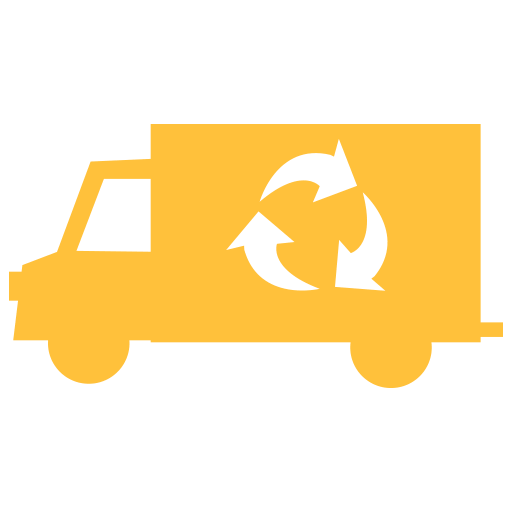Turn Old Threads Into New Treasures: A Recycling Guide
Posted on 19/09/2025
Turn Old Threads Into New Treasures: A Recycling Guide
Welcome to your comprehensive guide on transforming worn-out clothes into valuable gems! In a fast-fashion world, it's easy to accumulate heaps of old clothing, and while it may be tempting to toss them out, there's a more eco-friendly and creative way to handle those old threads. In this guide, we'll explore how you can breathe new life into your wardrobe, decrease waste, and even spark your creativity by upcycling and recycling garments. Join us as we turn old threads into new treasures!
Why Should You Recycle Old Clothes?
Textile waste poses a major environmental challenge worldwide. Over 92 million tons of textiles end up in landfills each year, causing pollution and wasting resources. Recycling old clothes doesn't just reduce waste--it provides extraordinary opportunities for creativity, financial savings, and environmental stewardship. Let's explore the top reasons to upcycle and recycle your clothing:
- Environmental preservation: Recycling fabrics cuts back on landfill waste, promotes energy conservation, and reduces water usage within the apparel industry.
- Economic benefits: Reusing or selling old garments can save money and even generate extra income.
- Personal expression: Upcycling lets you create truly unique fashion pieces tailored to your style.
- Supports social causes: Donating gently used clothes aids those in need and supports community projects.
The Impact of Textile Waste
Every second, an estimated garbage truck's worth of textiles is landfilled or burned across the globe. By choosing to recycle your old threads and adopt circular fashion practices, you become part of the solution--and can even inspire others in your community!

How to Begin: Sorting Your Clothes for Recycling
Before turning your old garments into new treasures, start with a thorough sort. This step helps determine which items can be upcycled, sold, donated, or recycled through specialized programs.
Step-by-Step Sorting Tips
- Inspect for wear and tear: Evaluate pieces for holes, stains, or fading to decide if repairs are needed or if the fabric is suitable for crafts.
- Separate by fabric type: Natural fibers (cotton, wool, linen) and synthetics (polyester, nylon) require different recycling methods.
- Decide what to keep: Set aside items with sentimental value or those easy to update through simple DIY fixes.
- Assign piles: Make piles for donations, upcycling, repurposing, or textile recycling bins.
Creative Ways to Repurpose Old Clothes
Looking to transform your forgotten clothes into something special? With a bit of creativity, you can convert old textiles into practical, stylish, and fun pieces--the ultimate form of clothing recycling!
Easy DIY Upcycling Projects
- T-shirt Tote Bags: Convert worn tees into reusable shopping bags--no sewing required for most projects!
- Patchwork Quilts: Gather scraps from different garments to stitch a unique, colorful quilt.
- Denim Planter Pockets: Old jeans can be cut and sewn into creative wall organizers or rustic planters.
- Scrunchies and Hair Accessories: Turn remnants into trendy hairpieces or headbands.
- Cushion Covers: Brighten up your home using vibrant fabrics from shirts or dresses.
- Knit Rag Rugs: Use strips of knits and cottons to make cozy, washable floor mats.
Advanced Clothing Upcycling Ideas
- Garment Reconstruction: Transform oversized shirts into fitted blouses, or merge two pieces into one-of-a-kind hybrids.
- Fabric Dyeing & Painting: Use eco-friendly dyes or fabric paints to give faded clothes a fresh look.
- Accessory Magic: Craft jewelry, brooches, or handbags from fabric remnants, buttons, and zippers.
The Art of Donating: Giving Old Threads a Second Life
Donation is a straightforward way to recycle clothes while helping others. Many organizations and charities depend on gently used garments for their missions. Before donating:
- Wash and repair items to ensure they're clean and wearable.
- Avoid donating severely damaged, stained, or unwearable pieces--these are better suited for textile recycling programs.
- Find local shelters, thrift shops, or charity drop-off bins in your area.
- Consider specialty programs for items like business attire, which can support job-seekers re-entering the workforce.
By donating, you extend the lifecycle of your clothes and support meaningful causes in your community!
Textile Recycling: From Shredded Cloth to Brand New Fabric
For items beyond repair, textile recycling is the most sustainable option. Not sure where to start? Here's a primer on how textile recycling works and how you can get involved.
How Textile Recycling Works
- Collection: Clothing is gathered via recycling bins, retailers' take-back programs, or municipal drop-off sites.
- Sorting: Collected textiles are sorted by material type and condition.
- Processing: Usable clothing is separated; the rest is shredded into fibers for new materials, such as insulation, stuffing, or industrial rags.
- Reuse: Recycled fibers can be spun into yarn, woven into new fabrics, or incorporated into products like car seats and mats.
Tip: Many major clothing brands now offer in-store garment recycling programs; check with local retailers to responsibly recycle your old threads.
How to Sell Your Gently Used Clothes
Want to earn some extra cash and give your pre-loved clothing a fresh start? Selling gently used apparel online or via consignment can be a rewarding part of your clothing recycling journey.
Top Platforms for Selling Old Clothes
- ThredUp: Send in a bag of your items and receive payment when they sell.
- Depop: A creative marketplace perfect for trendy, vintage, and unique finds.
- Poshmark: Easily list your items and interact with a fashion-savvy community.
- eBay: Reach a global audience for luxury or collectible threads.
- Local Consignment Shops: Great for high-quality pieces and designer goods.
Pro Tip: Take clear photos, write detailed descriptions, and be honest about the condition of your garments to maximize your sales!
Sustainable Fashion: Building an Eco-Friendly Wardrobe
Turning old clothing into new treasures goes hand-in-hand with building long-term sustainable habits. Here are some practical tips for maintaining an eco-friendly wardrobe:
- Buy Less, Choose Well: Invest in quality pieces that last, rather than chasing fleeting trends.
- Care for Your Clothes: Follow washing instructions, air-dry when possible, and repair small damages promptly.
- Host Clothing Swaps: Share clothes with friends and family to refresh your closet without buying new.
- Support Sustainable Brands: Purchase from companies committed to ethical and eco-friendly practices.
Integrating Clothes Upcycling Into Your Routine
Consider scheduling a seasonal "closet audit" to keep recycling and upcycling top of mind. Over time, you'll reduce clutter, save money, and carve out your own unique sense of style--all while benefiting the environment.
Key Takeaways: Transforming Old Threads Into New Treasures
- Recycling and upcycling clothing reduces landfill waste, saves resources, and supports communities.
- With simple DIY projects, you can convert outdated garments into fashionable and functional items.
- Donation and selling offer additional avenues for re-homing your clothes responsibly.
- Choose textile recycling for items that are beyond repair, ensuring sustainable processing and reuse.
- Adopt sustainable fashion habits to minimize your wardrobe's environmental impact in the future.

Frequently Asked Questions About Clothing Recycling
Can all fabrics be recycled or upcycled?
Most natural fibers and many synthetics can be recycled or repurposed. Items heavily contaminated with oils, chemicals, or mold, however, may not be suitable for conventional recycling programs.
Is it better to donate or recycle old clothes?
Both options serve important roles. Donate wearable items in good condition; recycle garments that are worn out, torn, or stained.
Are there any financial incentives for recycling clothes?
Besides selling items, some brands offer store discounts or rewards for bringing in used clothing to their recycling programs.
How often should I audit my wardrobe?
A seasonal or twice-yearly audit helps keep your closet organized, fresh, and eco-friendly.
Conclusion: Start Your Sustainable Fashion Journey Today
Don't let your old threads gather dust or end up in the landfill. Whether you opt to upcycle, donate, sell, or recycle, each step prolongs the life of your garments and helps the planet. Turning old threads into new treasures can be creative, fun, and deeply rewarding. Embrace the journey--your closet, your wallet, and the environment will thank you!
Ready to join the movement? Share your upcycling projects, donation tips, and recycling successes with your friends and inspire a new wave of sustainable fashion lovers. Remember, every stitch counts on the path to a greener future!

 020 3875 4102
020 3875 4102 020 3875 4102
020 3875 4102




 House clearance
House clearance Rubbish collection
Rubbish collection





